Assumptions and planning
The fast paced project meant we couldn't wait to engage with stakeholders before collating research and finding opportunity areas. A Lean user research approach was taken, and a hypothesis generation document I created helped to frame our initial ideas and influenced engagement discussion guides.
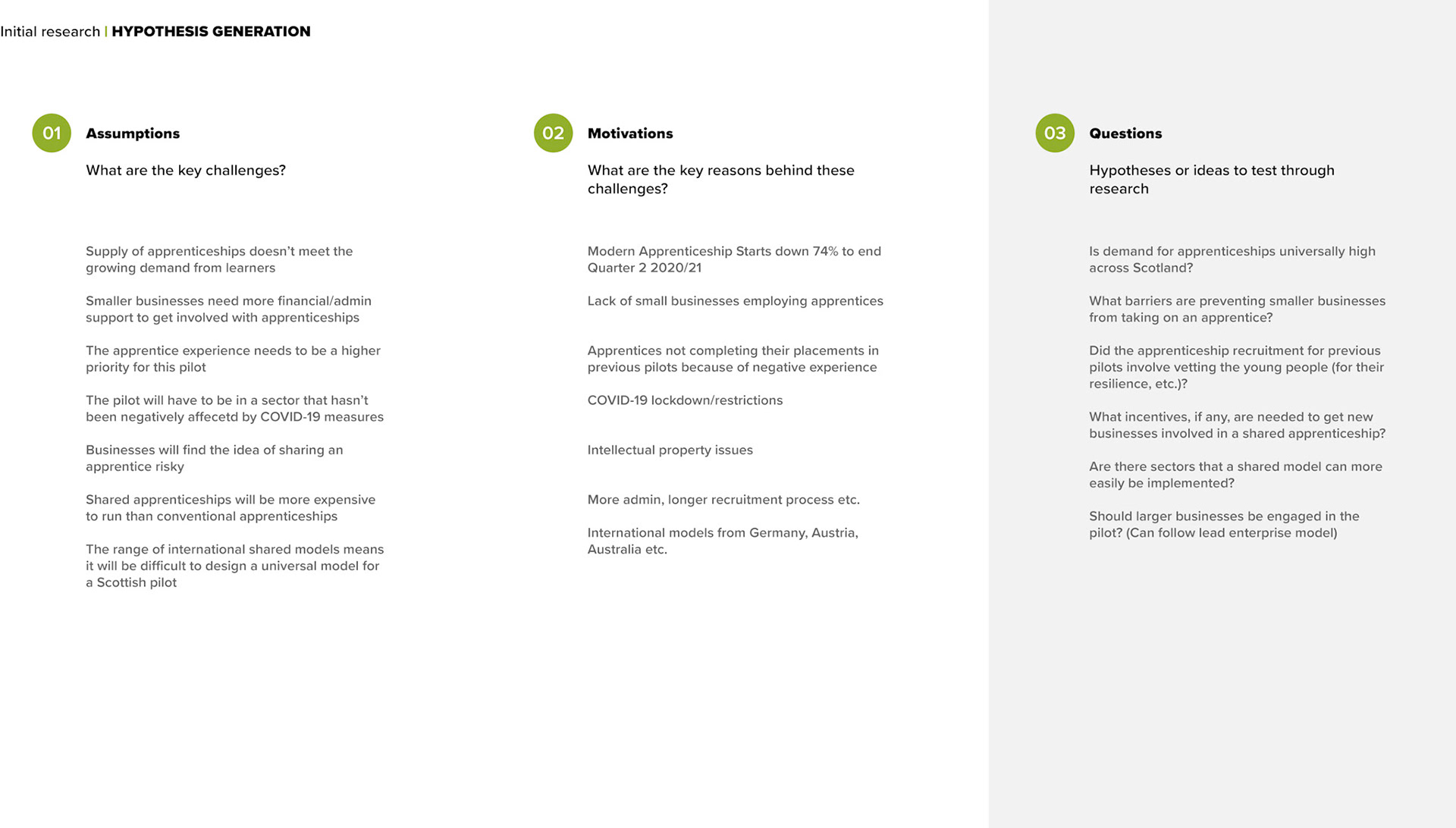
Research and synthesis
I helped to create a research wiki including interview quotes, existing literature and insights from previous pilots, all in one spreadsheet. This helped to define design principles, which evolved over the next couple of months.

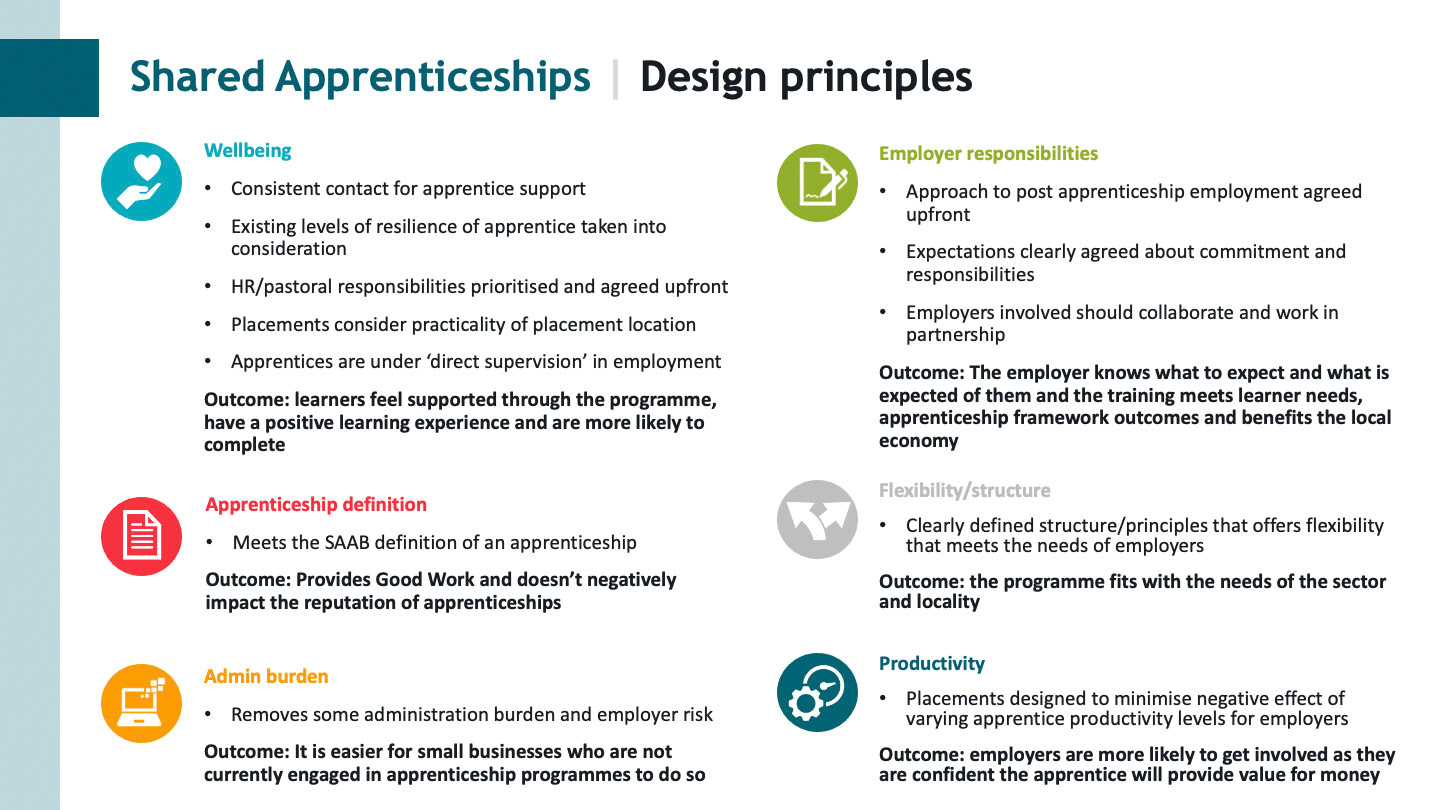
Stakeholder engagement
I led stakeholder interviews to challenge the research and assumptions made so far. Employers and training provider interviews gave an insight into the appetite for a new apprenticeship experience and helped me to develop the project design principles into something that reflects the needs of the learner, employer and training provider.
A workshop with a variety of training providers from the South of Scotland was also helpful later in the design process, to test feasibility of ideas and identify pilot opportunities, The training providers were able to advocate for learners and make sure we were designing with all users in mind.
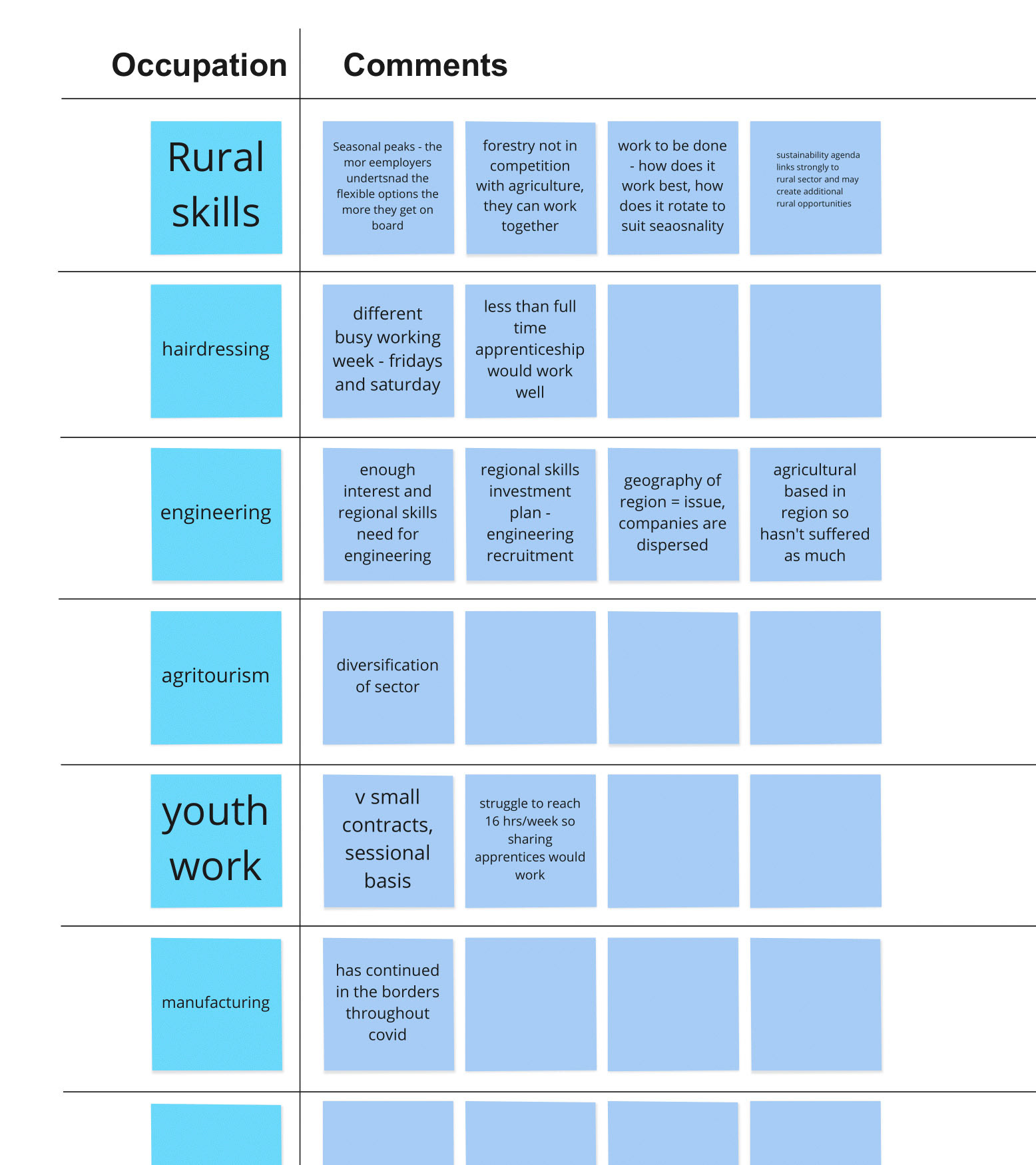
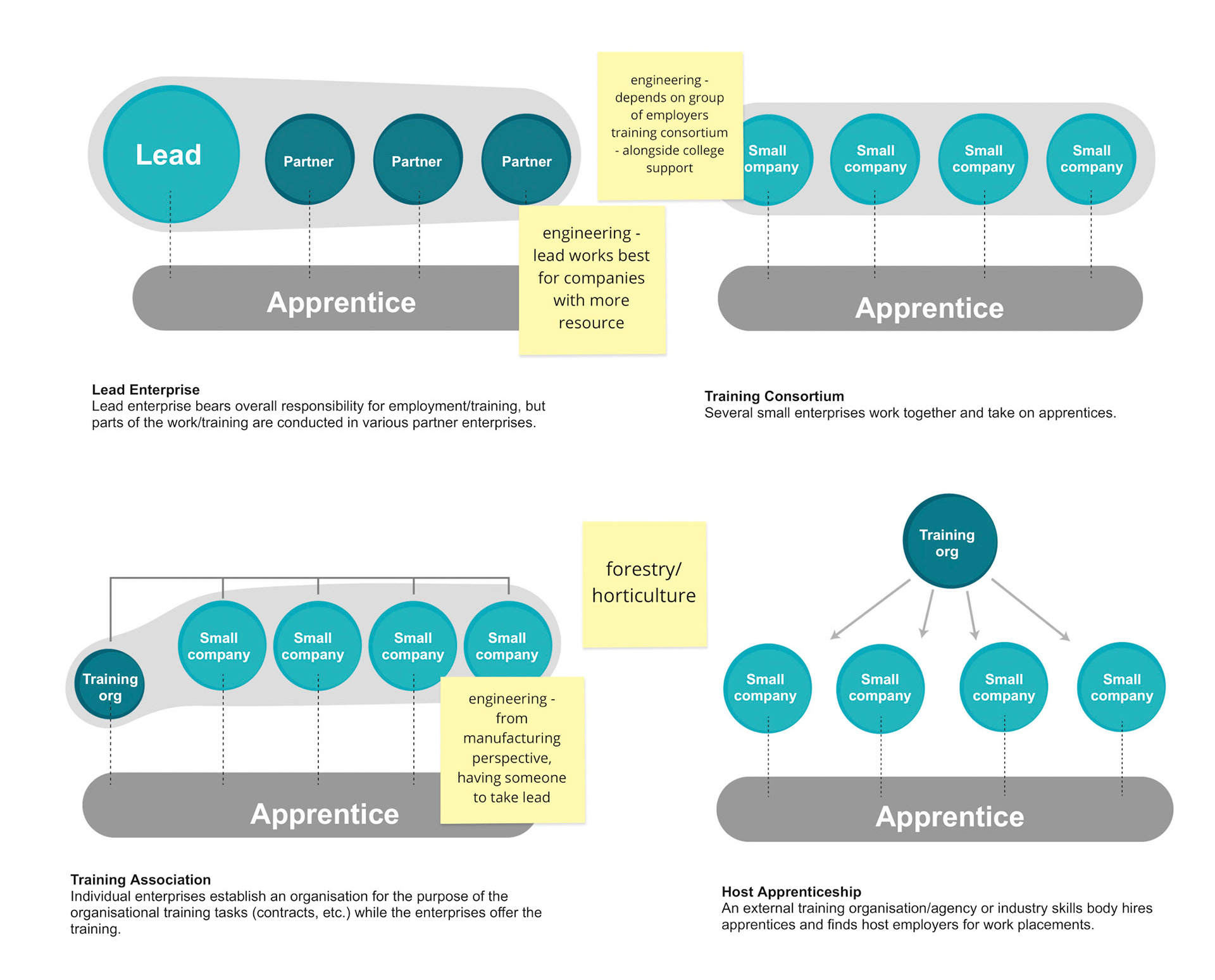
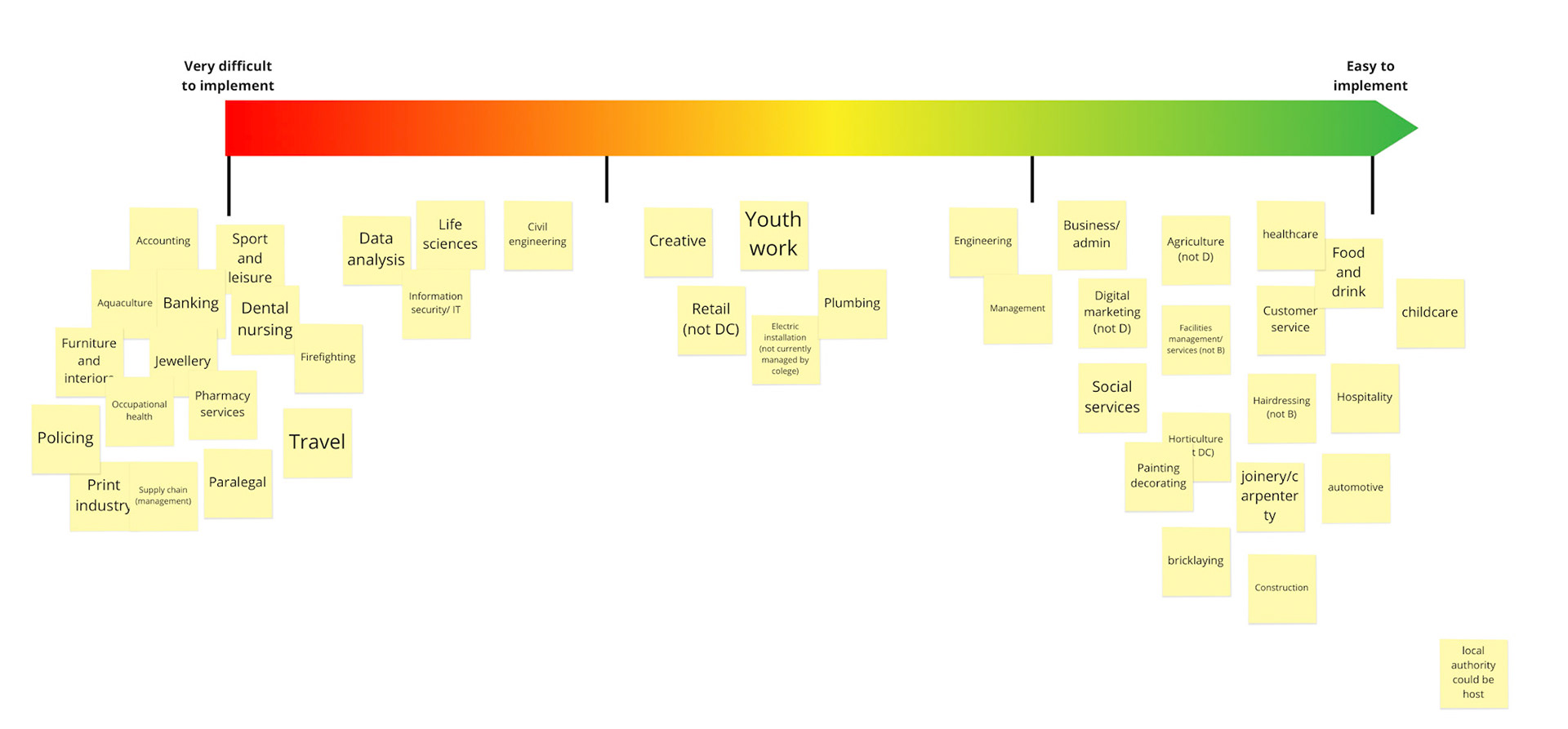
Prototyping
Insights from user research influenced the apprenticeship concepts, with a focus on the time a learner spends with each employer and the wellbeing of the learner as a priority. An easy way to share these ideas back to the wider team and stakeholders was to consider a "menu" of options under the areas of apprenticeship structure, occupation and learning experience.
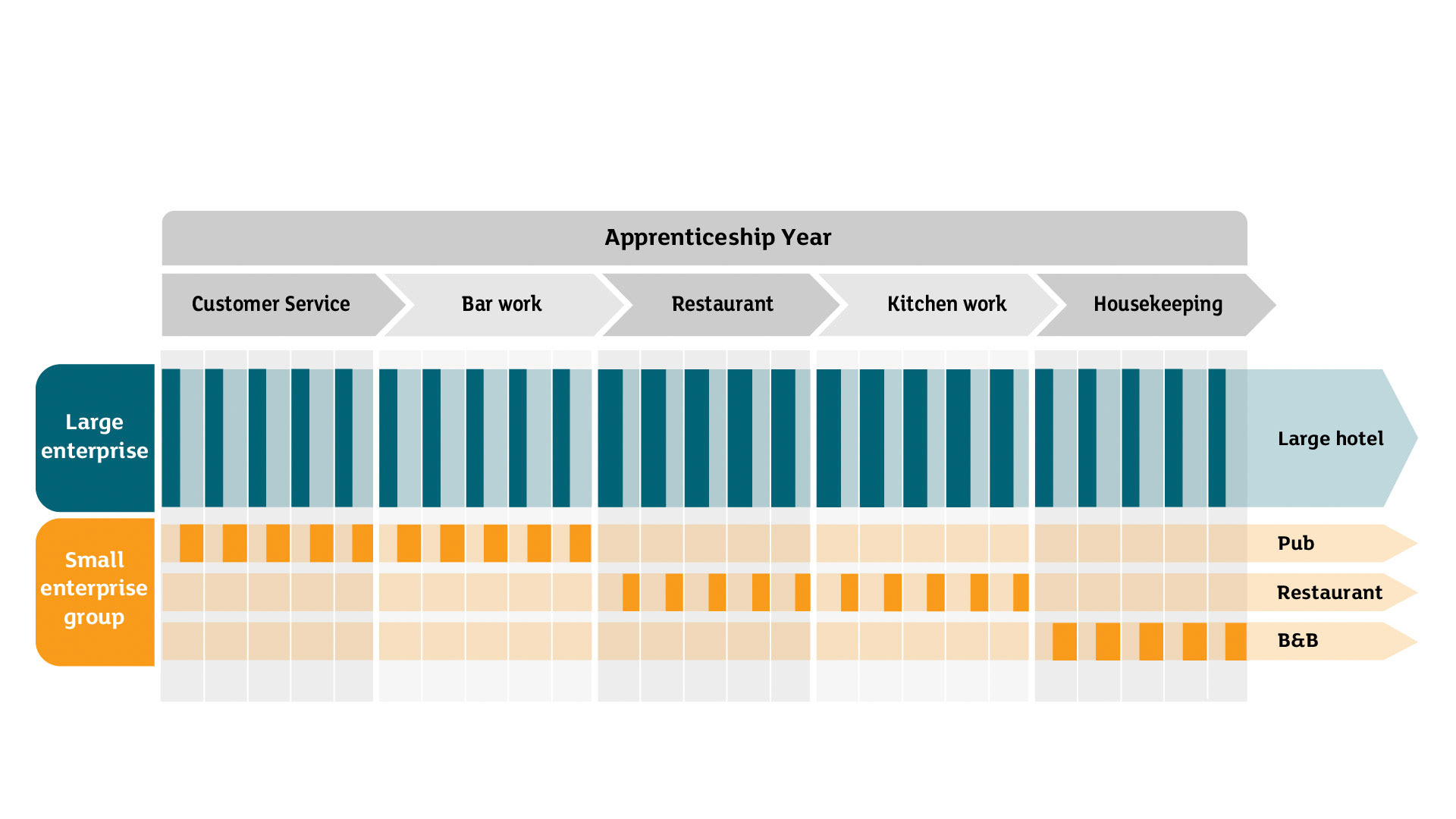
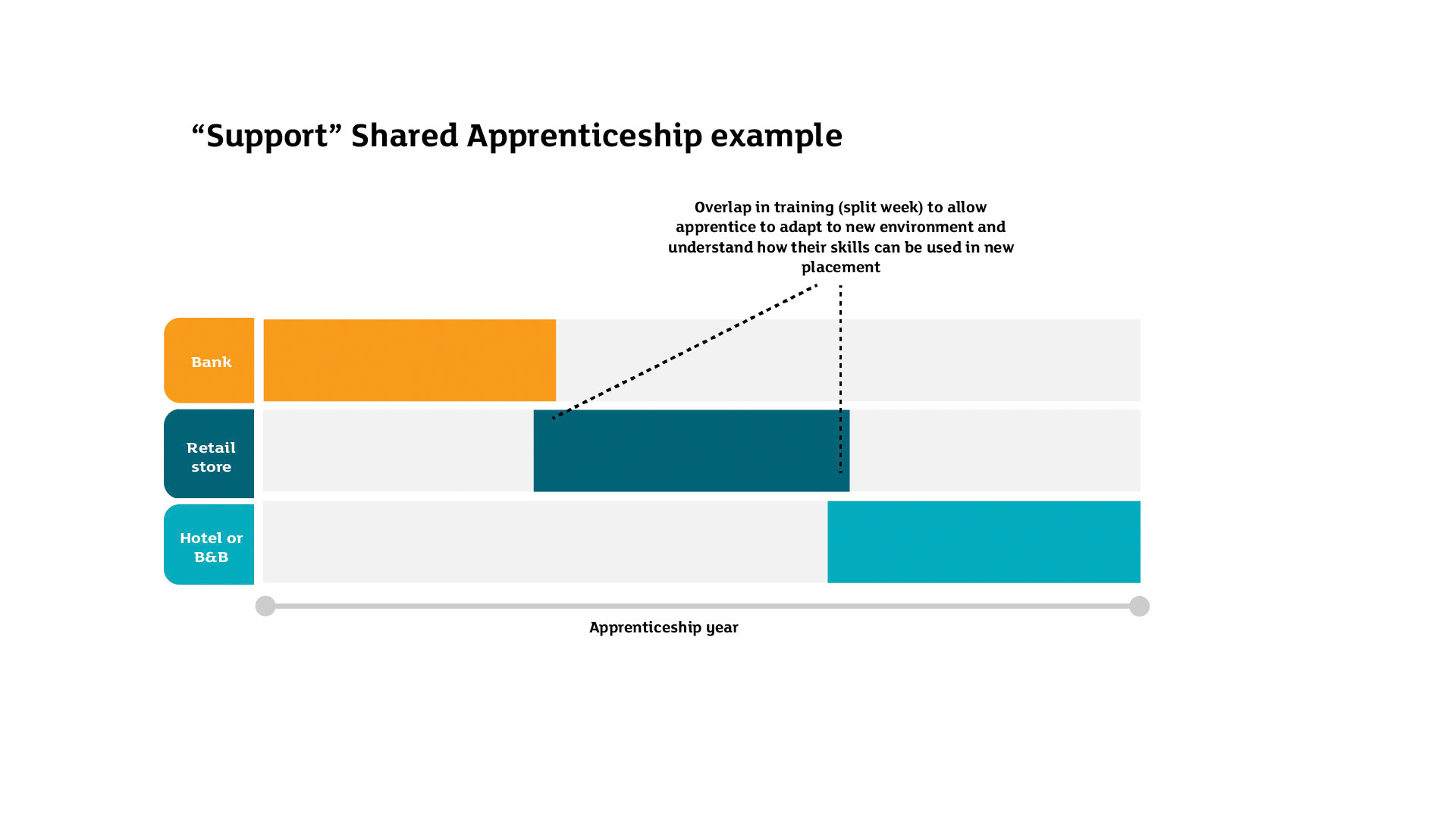
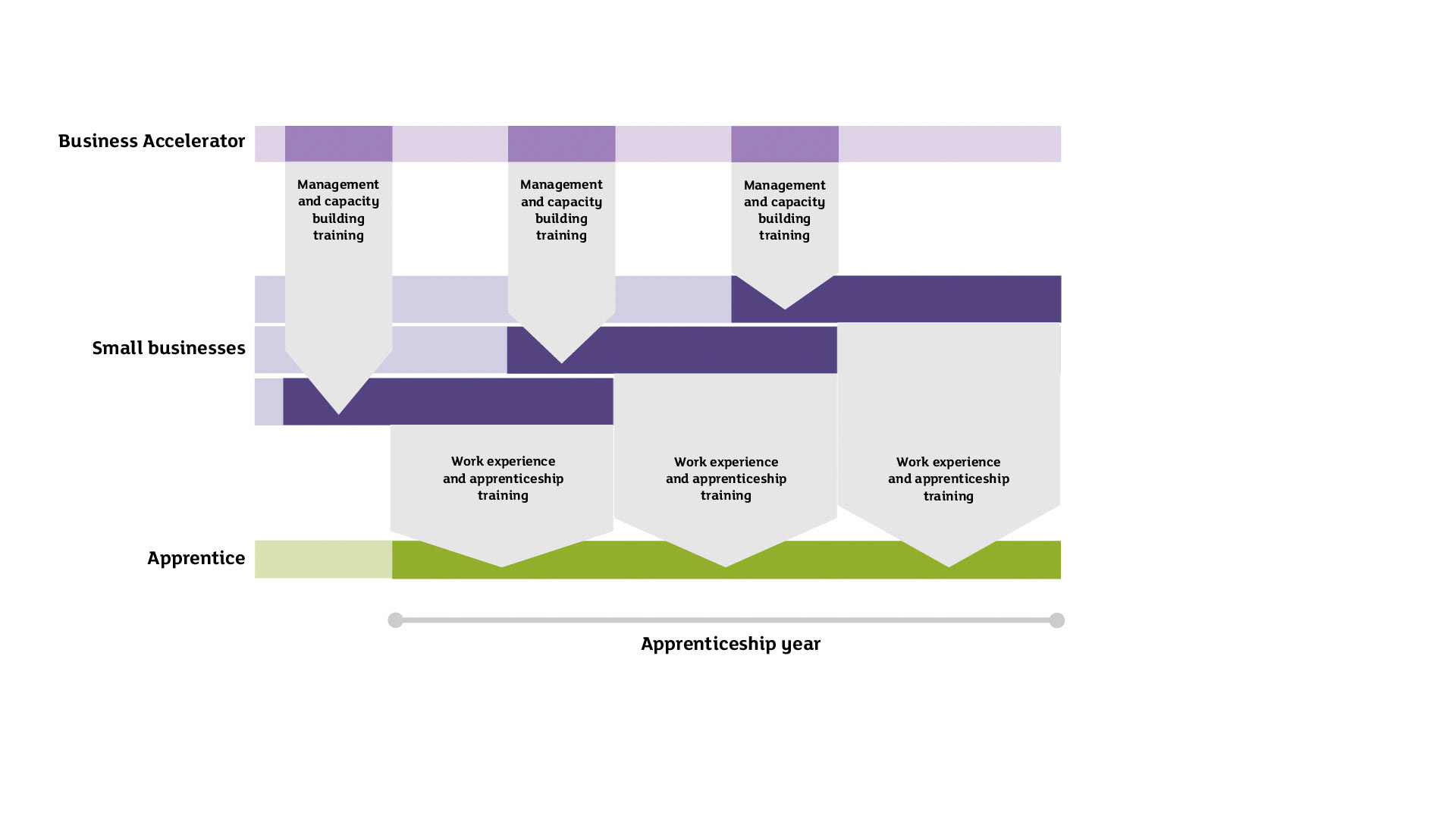
Evaluation
The research wiki evolved into a larger database, with input from the analysis team. The pilot opportunity options were evaluated using a matrix considering feasibility of model and suitability of sector/occupation. I created a simplified value proposition canvas for the opportunities with the most potential, so it could be shared and used as a tool during further discussion.

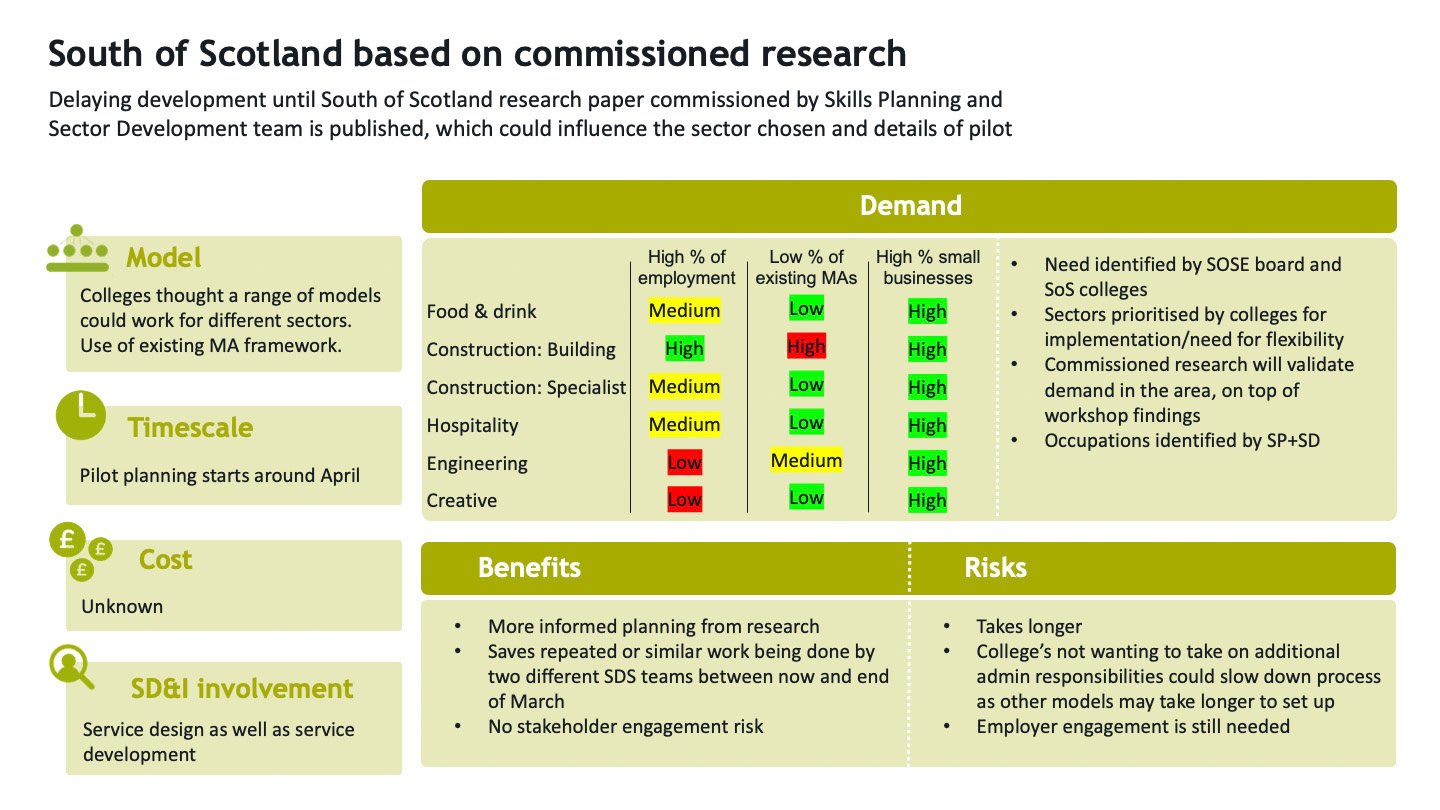

Successes
Research synthesis is something I love, so getting the chance to interrogate so much data as well as user insights gave me confidence in the project and the concepts that developed from this research. I was able to condense the large research wiki into digestible summary slides which helped my team present and energise people around the idea of shared apprenticeships.
The transition from a short design sprint into a longer project felt easy, in large part because of the amount of good quality research we had as a foundation to build upon.
Lessons learnt
Due to initial time constraints, we weren't able to talk to learners/ apprentices directly for research. They were represented in research gathered from previous projects, and other stakeholders advocated for them, but I would have felt more confident in my research synthesis if it had included direct input from learners. If I were to start this project again, I would make learner interviews a priority and arrange with stakeholders to allow that to happen in the short sprint timeframe.